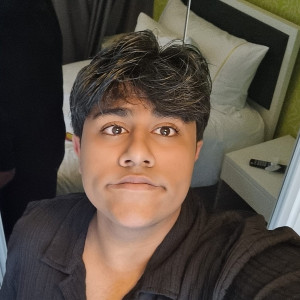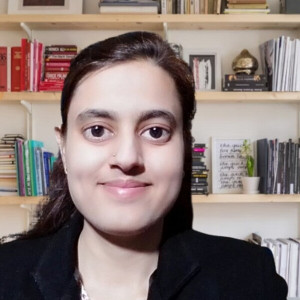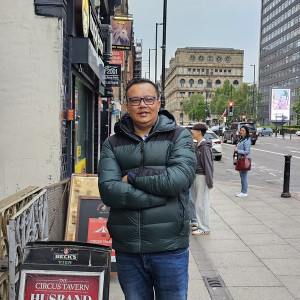Learning any new language is like taking a fascinating journey, and Hindi is no exception. If you are from Singapore and have heard the stories of how the nation’s diverse culture blends English, Malay, Mandarin, and Tamil, you’ll know that every language has its way of expressing time. Hindi, with its rich history, is no different—it uses tenses to show when an action happens, just like English does. In this article, you’ll find simple explanations, examples, and practical lessons that will help you master tenses easily. Think of this as a roadmap, guiding you step by step in building sentences in Hindi and becoming confident in everyday conversations.
Understanding tenses is the foundation of creating meaningful sentences. Just as Singapore’s legends, like the story of Sang Nila Utama discovering the lion city, have a sequence of events, Hindi grammar uses tenses to bring life to events in the past, present, or future. Through examples and carefully crafted lessons, you will see how a single verb can transform a sentence, changing its meaning based on the tense.
Hindi is the most spoken native language in India, with more than 422 million Indian people speaking it as their first language. On top of that, another 130 million Indians speak Hindi as their second or even third language. These figures should not be surprising given that Hindi is the official language of the Indian government, along with English. With a total of more than 550 million speakers, over a population of nearly 1.4 billion, Hindi is an essential medium of communication in India.
If you are heading there for your studies, your work or just for holidays, getting to know the local language could come in very Hindi, mainly because India can be a very disorienting and unfamiliar territory.
Whether you’re a beginner or someone brushing up on your skills, this guide is designed for you. We encourage you to follow along with the examples, try forming your sentences, and share your reviews or questions as you progress. Think of this as your personal Hindi grammar coach, where each section builds on the previous lesson to give you a clear and structured learning experience.
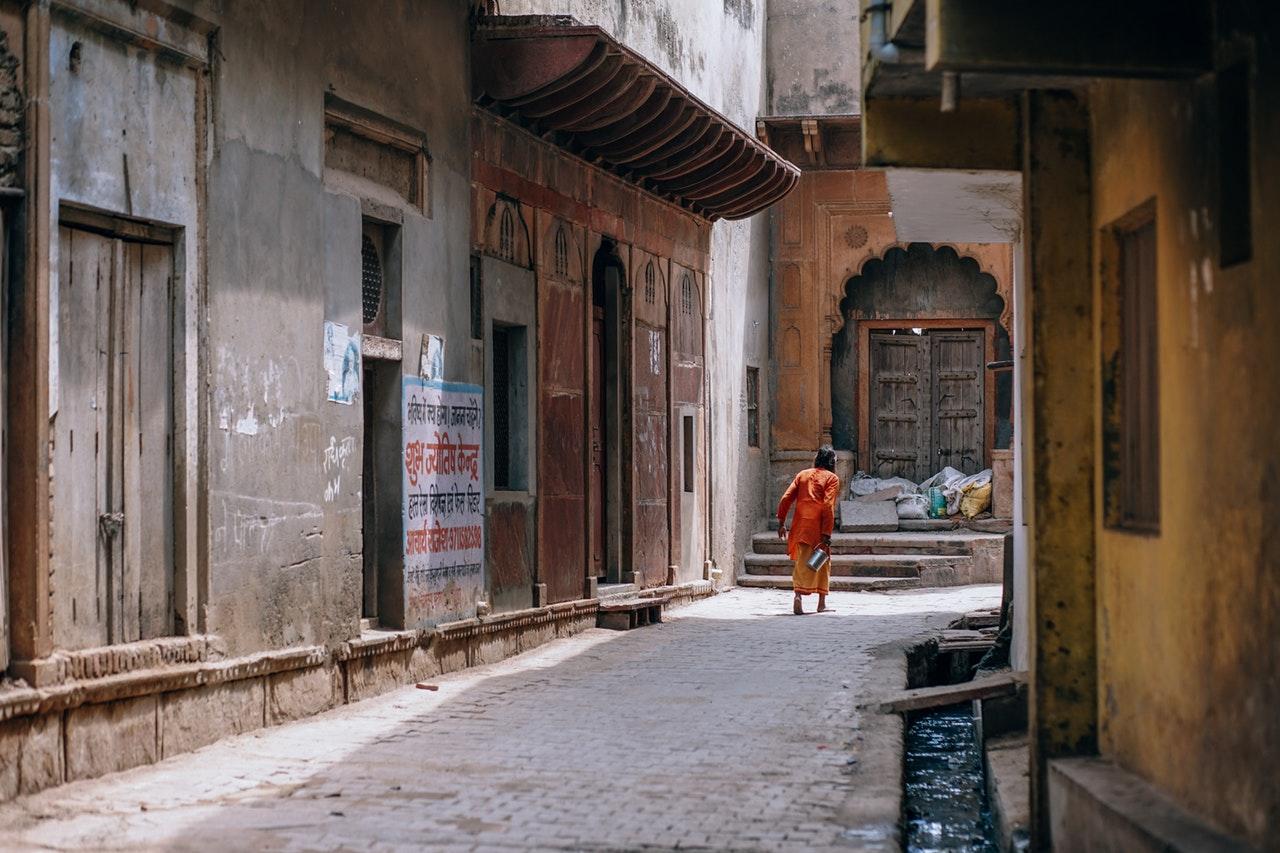
Basics of Conjugation in Hindi
To conjugate verbs in Hindi, you must first identify the stem of the verb. This is pretty easy as every regular verb will end in -naa. By removing this -naa suffix, you found the stem of the verb.
The number of irregular verbs is limited, so let's not worry about them for now.
Example: To read = Padhnaa >Padh is the stem of the verb, and naa is the infinitive suffix. You should also always remember:
- Verbs have a different ending depending if the subject is masculine or feminine. It means that each verb for each tense and each pronoun will have two forms. The feminine form nearly always ends in -ee or -en whereas the masculine form ends either in -e or -aa
- Unlike English, the second person pronoun is not the same according to who you speak. In English regardless if you are talking to your mate or the Prime Minister, you will use "you". In Hindi "you" can have three different forms "t?" is the "you" for your loved ones and maybe your closest friends, "tum" is the familiar "you" that you would use while speaking to your colleagues and "?p" is the formal and respectful "you" that you would use if speaking to your boss or the Indian Prime Minister.
- Most Hindi verbs are regular, making it easy for you to learn as their conjugation will follow logic and identical patterns.

Present Tenses in Hindi
Present Indefinite in Hindi
A tense aims to set the action within a time frame. The present simple form is commonly used to describe an action or a fact that is true in the present, something that happens regularly or something that is always true.
In Hindi, to conjugate any verb in the present simple, you will use the auxiliary verb "to be" or "hona". See the declension below:
I am = Main hoon
You (intimate) are = Too hai
You (familiar) are = Tum ho
You (formal) are = Aap hain
He / She / This is = Voh / Yeh hai
We are = Ham hain
They / That are = Ve / Ye hain
Also, you need to know how to form the participle of a verb. Once you identified the stem of a verb, remove the infinitive suffix -naa and add either -taa (singular masculine), -te (plural masculine) or -tee (singular and plural feminine), this give you the participle.
The present simple is built as follow:
(Stem of the verb + present participle suffix -taa = Present participle of the verb) + Auxiliary "to be"
For "to read" this will unfold as: Padhnaa > Padh + taa > Main Padhtaa + hoon = I read
Simple isn't it?
I read= Main Padhtaa (-ee) hoon
You (intimate) read = Too Padhtaa (-ee) hai
You (familiar) read = Tum Padhte (-tee) ho
You (formal) read = Aap Padhte (-ee) hain
He / She / This read = Voh / Yeh Padhtaa (-ee) hai
We read = Ham Padhte (-ee) hain
They / That read = Ve / Ye Padhte (-ee) hain
Present Continous in Hindi
The present continuous is used when the action we are talking about takes place while we are talking, or to describe future plans. The mark of the continuous tense in English, no matter if it present, past or future, is the suffix -ing. In Hindi the equivalent of -ing is the word "raha"if a subject is a masculine singular, "rahe" if the subject is masculine plural and "rahi" if the subject is feminine (both singular and plural).
To form the present continuous in Hindi, you will need to use the stem of the verb followed by the Hindi word "rahaa" and then add the present tense of the auxiliary "to be".
I read= Main Padh raha (rahi) hoon
You (intimate) read = Too Padh raha (rahi) hai
You (familiar) read = Tum Padh rahe (rahi) ho
You (formal) read = Aap Padh rahe (rahi) hain
He / She / This read = Voh / Yeh Padh raha (rahi) hai
We read = Ham Padh rahe (rahi) hain
They / That read = Ve / Ye Padh rahe (rahi) hain

Present Perfect Tense – Simple Definition
The present perfect tense in Hindi is used to talk about actions that have been completed recently or have an effect on the present moment. It is similar to the English structure “have/has + past participle,” like I have read or She has eaten. In Hindi, the present perfect tense often uses the structure: Subject + ने (ne) + Object + Perfect Verb Form + है/हैं (hai/hain).
I have done = Main kar chuka (chuki) hoon
You (intimate) have done = Tu kar chuka (chuki) hai
You (familiar) have done = Tum kar chuke (chuki) ho
You (formal) have done = Aap kar chuke (chuki) hain
He / She / This has done = Voh / Yeh kar chuka (chuki) hai
We have done = Hum kar chuke (chuki) hain
They / That have done = Ve / Ye kar chuke (chuki) hain
Present Perfect Continuous in Hindi
The Present Perfect Continuous Tense in Hindi is used to describe actions that started in the past and are still continuing, often with a mention of how long the action has been happening. In English, this is formed with has been/have been + verb + ing, while in Hindi it uses the structure Subject + time reference + main verb (root + raha/rahi/rahe) + hai/hain. For example, I have been reading for two hours, which translates to Main do ghante se padh raha hoon. Here, the verb padh means “to read,” raha indicates the continuous aspect, and hoon places the sentence in the present tense. The phrase do ghante se adds the required time frame, making it present perfect continuous.
I have been doing it for two hours = Main do ghante se ise kar raha (rahi) hoon.
You (intimate) have been doing it for two hours = Tu do ghante se ise kar raha (rahi) hai.
You (familiar) have been doing it for two hours = Tum do ghante se ise kar rahe (rahi) ho.
You (formal) have been doing it for two hours = Aap do ghante se ise kar rahe (rahi) hain.
He / She / This has been doing it for two hours = Voh / Yeh do ghante se ise kar raha (rahi) hai.
We have been doing it for two hours = Hum do ghante se ise kar rahe (rahi) hain.
They have been doing it for two hours = Ve / Ye do ghante se ise kar rahe (rahi) hain.
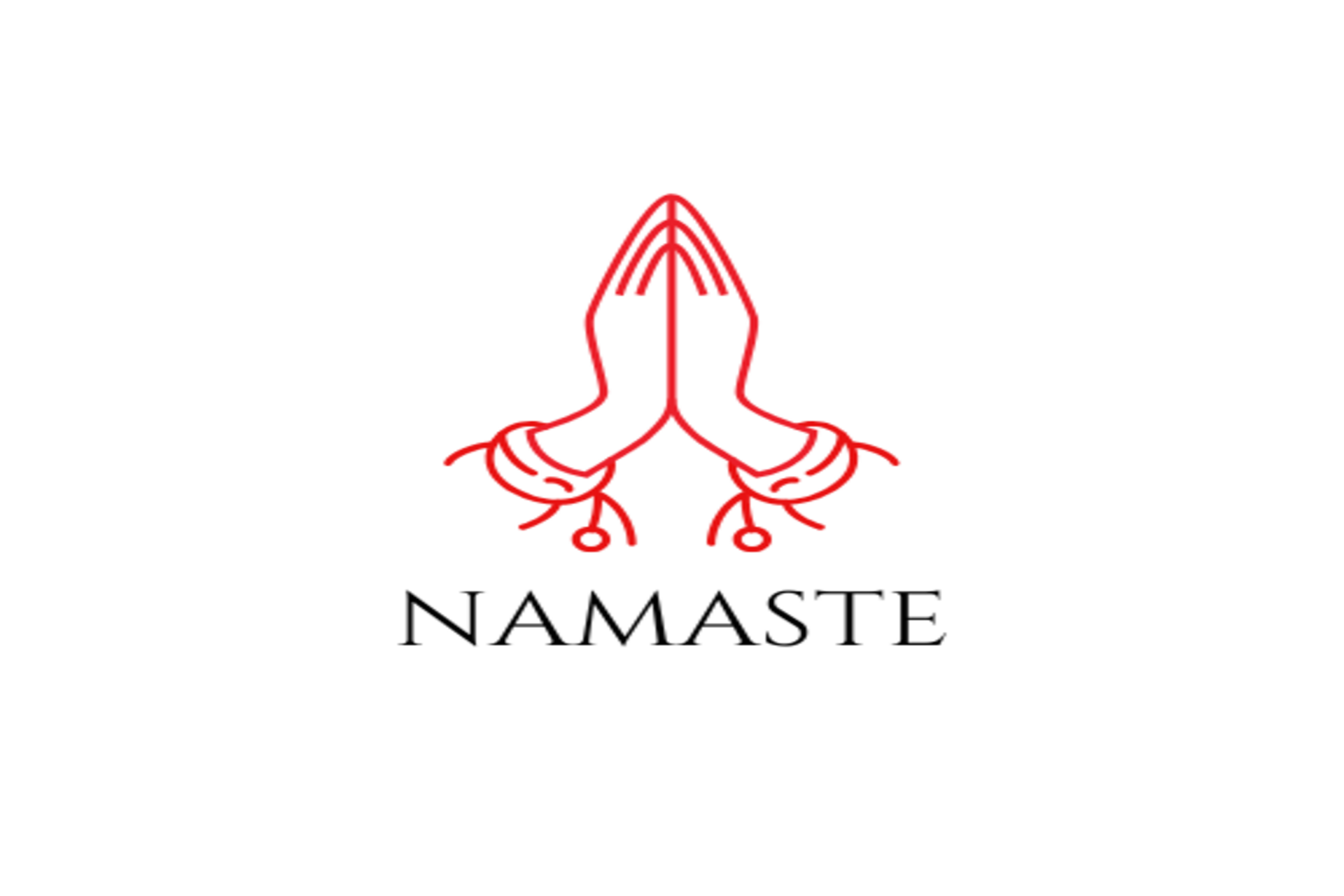
Past Tenses in Hindi
To be able to conjugate in the past tenses in Hindi you will need to know the past tense of the auxiliary verb To be - Hona.
I was = Main tha (thi)
You (intimate) were= Too tha (thi)
You (familiar) were= Tum the (thin)
You (formal) were= Aap the (thin)
He / She / This was = Voh / Yeh tha (thi)
We were = Ham the (thin)
They / That were = Ve / Ye the (thin)
Past Indefinite in Hindi
The Past Simple is used to describe an action or a fact that happened in the past, recent or not, that is finished.
To form the past simple in Hindi, you need to proceed the same way you did for the present simple but rather than using the present form of the verb "Hona" you will use the past tense. The form between parenthesis is the feminine conjugation.
I read= Main Padhtaa (-ee) tha (thi)
You (intimate) read = Too Padhtaa (-ee) tha (thi)
You (familiar) read = Tum Padhte (-tee) the (thin)
You (formal) read = Aap Padhte (-ee) the (thin)
He / She / This read = Voh / Yeh Padhtaa (-ee) tha (thi)
We read = Ham Padhte (-ee) the (thin)
They / That read = Ve / Ye Padhte (-ee) the (thin)
The Past Continuous
The past continuous is used to describe an action that started in the past but which is still happening at the time of speaking. It describes uncomplete or ongoing actions.
Once again, to write the past continuous form of a regular verb, simply use the same way you wrote the present continuous but replace the present tense form of the auxiliary by the past tense of "hona".
I was reading= Main Padh raha (rahi) tha (thi)
You (intimate) were reading = Too Padh raha (rahi) tha (thi)
You (familiar) were reading = Tum Padh rahe (rahi) the (thin)
You (formal) were reading = Aap Padh rahe (rahi) the (thin)
He / She / This was reading = Voh / Yeh Padh raha (rahi) tha (thi)
We were reading = Ham Padh rahe (rahi) the (thin)
They / That were reading = Ve / Ye Padh rahe (rahi) the (thin)
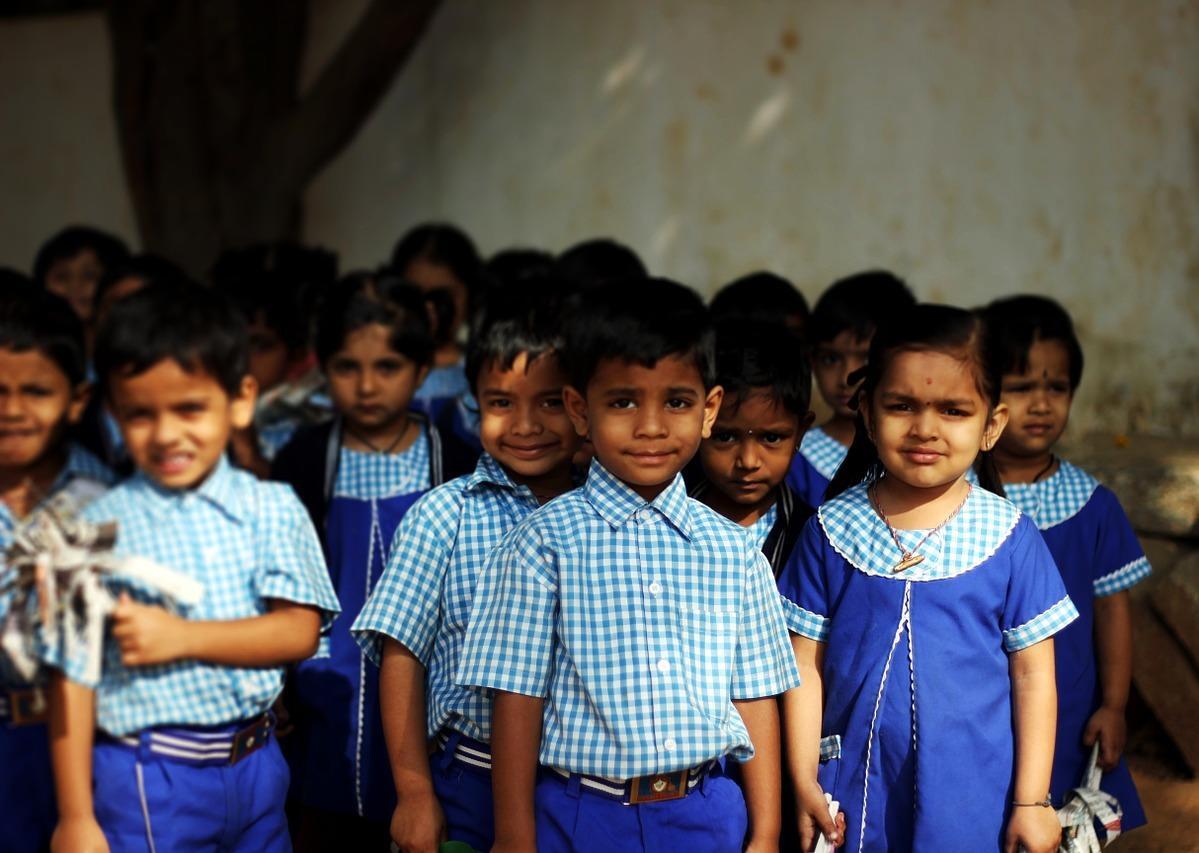
Past Perfect Tense in Hindi
The Past Perfect Tense is used to describe an action that was completed before another action or time in the past. In English, it is formed with had + past participle, for example, I had completed my homework before 8 PM. In Hindi, this tense is formed by combining the past form of the main verb with "tha," "thi," or "the" to indicate past completion. For example, I had eaten before she arrived is translated as Mainne uske aane se pehle khana kha liya tha (Pronunciation: Main-ne uske aane se pehle khaana khaa liyaa thaa). The key feature of this tense is that it indicates which action occurred first when discussing two past actions.
I had played = Main khel chuka (chuki) tha.
You (intimate) had played = Tu khel chuka (chuki) tha.
You (familiar) had played = Tum khel chuke (chuki) the.
You (formal) had played = Aap khel chuke (chuki) the.
He / She / This had played = Voh / Yeh khel chuka (chuki) tha (thi).
We had played = Hum khel chuke (chuki) the.
They had played = Ve / Ye khel chuke (chuki) the.
Past Perfect Continuous in Hindi
The Past Perfect Continuous Tense in Hindi is used to express an action that started in the past, continued for a certain duration, and stopped before another past event. In English, this tense is formed using had been + verb + ing, such as I had been reading for two hours when she arrived. In Hindi, this is translated using the verb root plus raha, rahi, rahe (to show continuity), followed by tha, thi, the (to indicate the past), along with a time expression like do ghante se (for two hours). For example, I had been reading for two hours translates to Main do ghante se padh raha tha (for males) or Main do ghante se padh rahi thi (for females).
I had been doing it for two hours = Main do ghante se ise kar raha (rahi) tha.
You (familiar) had been writing since yesterday = Tum kal se likh rahe (rahi) the.
He had been working for three hours = Voh teen ghante se kaam kar raha tha.
She had been watching television since Monday = Woh somvaar se TV dekh rahi thi.
We had been talking for a long time = Hum kaafi der se baat kar rahe the.
They had been playing cricket for three hours = Ve teen ghante se cricket khel rahe the.
If you want to explore Hindi grammar more deeply—including other tenses, verb forms, and sentence structures—you can check how to navigate Hindi grammar, which provides free explanations and resources for learners.

Future Tenses in Hindi
The Simple Future
This tense is used for many different reasons: describing a future event, to indicate the willingness (I will) or non-willingness (I won't) of the subject, to give an order (You will!) or an invitation (Will you?)
In Hindi, this tense neither requires the participle of the verb nor the use of the auxiliary "hona". Instead, the Hindi conjugation uses a unique suffix for each pronoun marking the future tense.
The form between parenthesis is the feminine conjugation.
I will read= Main Padhunga (-ungi)
You (intimate) will read= Too Padhega (-ungi)
You (familiar) will read= Tum Padhoge (-ungi)
You (formal) will read= Aap Padhenge (-ungi)
He / She / This will read= Voh / Yeh Padhega (-ungi)
We will read= Ham Padhenge (-ungi)
They / That will read= Ve / Ye Padhenge (-ungi)
The Future Continuous
This tense is used to describe an action or state that is expected to happen in the future but that will not be completed.
In English, we use the auxiliary "to be" in the future tense form (i.e . will) and we add the suffix -ing at the end of the verb.
The Hindi conjugation is rather similar as we use the future tense of the auxiliary "hona" to conjugate regular verbs.
I will be = Main hunga (hungi)
You (intimate) will be = Too hoga (hungi)
You (familiar) will be= Tum hoge (hungi)
You (formal) will be= Aap honge (hungi)
He / She / This will be= Voh / Yeh hoga (hungi)
We will be = Ham honge (hungi)
They / That will be= Ve / Ye honge (hungi)
I will be reading= Main Padh raha (rahi) hunga (hungi)
You (intimate) will be reading = Too Padh raha (rahi) hunga (hungi)
You (familiar) will be reading = Tum Padh rahe (rahi) hoge (hungi)
You (formal) will be reading = Aap Padh rahe (rahi) honge (hungi)
He / She / This will be reading = Voh / Yeh Padh raha (rahi) hunga (hungi)
We will be reading = Ham Padh rahe (rahi) honge (hungi)
They / That will be reading = Ve / Ye Padh rahe (rahi) honge (hungi)
Future Perfect in Hindi
The Future Perfect Tense in Hindi is used to describe an action that will be completed before a certain time or event in the future. In English, this tense is formed using will have + past participle, as in I will have completed my work before you arrive. In Hindi, we use the verb root with chuka/chuki/chuke to show completion, followed by hoga/hogi/honge to indicate the future. For example, I will have finished my homework is translated as Main apna kaam khatam kar chuka honga (for males) or Main apna kaam khatam kar chuki hongi (for females).
When learning this tense, it helps to study reviews of grammar resources and structured lessons to understand its nuances. A common case of confusion arises when learners mix up the Future Perfect with the simple Future Tense. For example, Main kaam karunga means "I will do the work," whereas Main kaam kar chuka honga means "I will have done the work." Recognising the word chuka/chuki/chuke as a marker of completion is essential
I will have done this work = Main yeh kaam kar chuka (chuki) honga (hungi).
You (familiar) will have eaten by then = Tum tab tak kha chuke (chuki) hoge.
He will have reached home = Voh ghar pahunch chuka hoga.
She will have completed the task = Woh kaam khatam kar chuki hogi.
We will have learned the lesson by tomorrow = Hum kal tak paath seekh chuke honge.
They will have left before we arrive = Ve hamare pahunchne se pehle ja chuke honge
To explore more verb forms and practice with real examples, you can check a guide to common Hindi verbs, which provides free resources and explanations for learners.
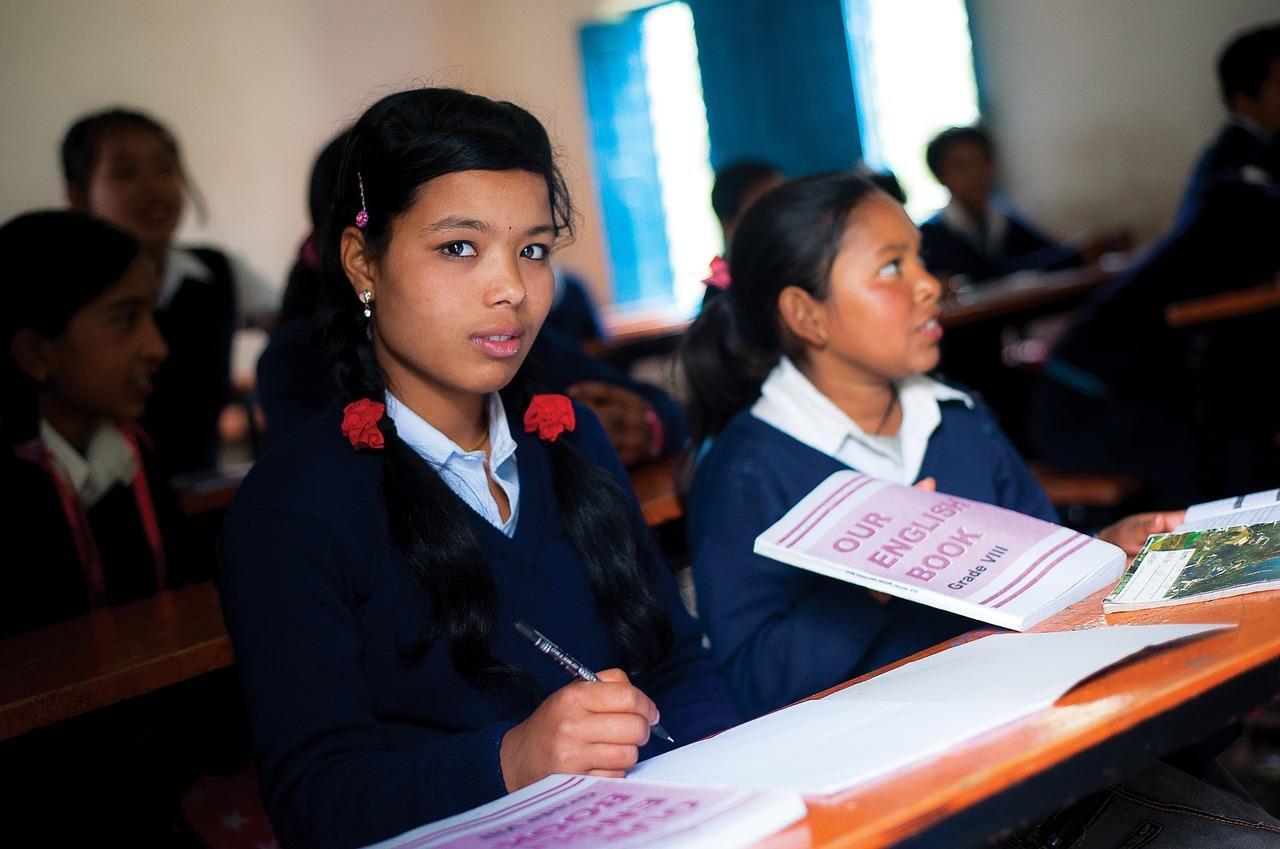
Future Perfect Continuous in Hindi
The Future Perfect Continuous Tense in Hindi is used to express an action that will have been continuing for a certain period before a specified point in the future. In English, it is formed as will have been + verb + ing, for example, I will have been working for five hours by the time you arrive. In Hindi, this tense is constructed using the verb root + raha / rahi / rahe, followed by hoga / hogi / honge, and a time expression like do ghante se (for two hours). For example, I will have been reading for two hours translates to Main do ghante se padh raha (rahi) honga (hungi).
Learners often get confused between the Future Continuous and the Future Perfect Continuous, especially in the case of time markers. While the Future Continuous simply says an action will be happening (Main padh raha honga – I will be reading), the Future Perfect Continuous adds the duration (Main do ghante se padh raha honga – I will have been reading for two hours). Going through structured lessons and reviews of grammar guides can make this tense easier to understand, especially since the use of se (since/for) is critical here.
I will have been doing this for two hours = Main do ghante se yeh kar raha (rahi) honga (hungi).
You (familiar) will have been working since morning = Tum subah se kaam kar rahe (rahi) hoge.
He will have been reading for a week = Voh ek hafte se padh raha hoga.
She will have been waiting since 5 PM = Woh paanch baje se intezaar kar rahi hogi.
We will have been practising for a long time = Hum kaafi der se abhyas kar rahe honge.
They will have been playing since yesterday = Ve kal se khel rahe honge.
If you want to dive deeper into verb patterns and improve your mastery of this tense and others, you can explore and find lessons to master Hindi conjugation here for free, tips and structured guides.
Free Hindi Grammar Tenses Worksheets
| Tense | Hindi Sentence | Pronunciation | English Translation | Mandarin | Malay |
|---|---|---|---|---|---|
| Present Indefinite | मैं खेलता हूँ | MAIN khel-ta hoon | I play | 我玩 (Wǒ wán) | Saya bermain |
| Present Continuous | मैं खेल रहा हूँ | MAIN khel raha hoon | I am playing | 我在玩 (Wǒ zài wán) | Saya sedang bermain |
| Present Perfect | मैंने खेला है | MAIN-ne khela hai | I have played | 我玩过了 (Wǒ wán guò le) | Saya sudah bermain |
| Present Perfect Continuous | मैं दो घंटे से खेल रहा हूँ | MAIN do ghante se khel raha hoon | I have been playing for 2 hours | 我已经玩了2小时 (Wǒ yǐjīng wán le 2 xiǎoshí) | Saya sudah bermain selama 2 jam |
| Past Indefinite | मैंने खेला | MAIN-ne khel-a | I played | 我玩了 (Wǒ wán le) | Saya telah bermain |
| Past Continuous | मैं खेल रहा था | MAIN khel raha tha | I was playing | 我在玩 (Wǒ zài wán) | Saya sedang bermain |
| Past Perfect | मैंने खेल लिया था | MAIN-ne khel liya tha | I had played | 我已经玩了 (Wǒ yǐjīng wán le) | Saya sudah bermain |
| Past Perfect Continuous | मैं दो घंटे से खेल रहा था | MAIN do ghante se khel raha tha | I had been playing for 2 hours | 我已经玩了2小时 (Wǒ yǐjīng wán le 2 xiǎoshí) | Saya sudah bermain selama 2 jam |
| Future Indefinite | मैं खेलूँगा | MAIN khel-oonga | I will play | 我会玩 (Wǒ huì wán) | Saya akan bermain |
| Future Continuous | मैं खेल रहा होऊँगा | MAIN khel raha ho-unga | I will be playing | 我将会在玩 (Wǒ jiāng huì zài wán) | Saya akan sedang bermain |
| Future Perfect | मैं खेल चुका होऊँगा | MAIN khel chuka ho-unga | I will have played | 我将已经玩了 (Wǒ jiāng yǐjīng wán le) | Saya akan sudah bermain |
| Future Perfect Continuous | मैं दो घंटे से खेल रहा होऊँगा | MAIN do ghante se khel raha ho-unga | I will have been playing for 2 hours | 我将已经玩了2小时 (Wǒ jiāng yǐjīng wán le 2 xiǎoshí) | Saya akan sudah bermain selama 2 jam |
Free Tenses Exercises in Hindi for Beginners
| Tense | English Sentence | Hindi Sentence (with blank) | Answer (Hindi) | Malay Translation | Mandarin Translation |
|---|---|---|---|---|---|
| Present Indefinite | I play cricket every day. | Main roj cricket ___ hoon. (khel) | Main roj cricket khelta hoon. | Saya bermain kriket setiap hari | 我每天打板球 (Wǒ měitiān dǎ bǎnqiú) |
| Present Indefinite | She goes to school. | Woh school ___ hai. (jana) | Woh school jaati hai. | Dia pergi ke sekolah | 她去上学 (Tā qù shàngxué) |
| Present Indefinite | We eat dinner at 8 PM. | Hum raat 8 baje khana ___ hain. (khana) | Hum raat 8 baje khana khate hain. | Kami makan malam pada pukul 8 malam | 我们晚上8点吃饭 (Wǒmen wǎnshàng 8 diǎn chīfàn) |
| Present Continuous | I am reading a book. | Main ek kitaab ___ hoon. (padh) | Main ek kitaab padh raha hoon. | Saya sedang membaca buku | 我正在看书 (Wǒ zhèngzài kàn shū) |
| Present Continuous | He is playing football. | Woh football ___ hai. (khel) | Woh football khel raha hai. | Dia sedang bermain bola sepak | 他正在踢足球 (Tā zhèngzài tī zúqiú) |
| Present Continuous | They are watching TV. | Ve TV ___ hain. (dekh) | Ve TV dekh rahe hain. | Mereka sedang menonton TV | 他们正在看电视 (Tāmen zhèngzài kàn diànshì) |
| Present Perfect | I have completed my homework. | Mainne apna kaam ___ hai. (khatam kar) | Mainne apna kaam khatam kar liya hai. | Saya telah menyiapkan kerja rumah saya | 我已经完成了作业 (Wǒ yǐjīng wánchéngle zuòyè) |
| Present Perfect | She has written a letter. | Usne ek patra ___ hai. (likh) | Usne ek patra likha hai. | Dia telah menulis surat | 她写了一封信 (Tā xiěle yī fēng xìn) |
| Present Perfect | We have visited the temple. | Humne mandir ___ hai. (ja) | Humne mandir jaa liya hai. | Kami telah mengunjungi kuil | 我们已经参观了寺庙 (Wǒmen yǐjīng cānguānle sìmiào) |
| Present Perfect Continuous | I have been working for two hours. | Main do ghante se ___ hoon. (kaam kar) | Main do ghante se kaam kar raha hoon. | Saya telah bekerja selama dua jam | 我已经工作了两个小时 (Wǒ yǐjīng gōngzuòle liǎng gè xiǎoshí) |
| Present Perfect Continuous | She has been waiting since morning. | Woh subah se ___ hai. (intezaar kar) | Woh subah se intezaar kar rahi hai. | Dia telah menunggu sejak pagi | 她从早上就一直在等 (Tā cóng zǎoshang jiù yīzhí zài děng) |
| Present Perfect Continuous | We have been studying for a week. | Hum ek hafte se ___ hain. (padh) | Hum ek hafte se padh rahe hain. | Kami telah belajar selama seminggu | 我们已经学习了一周 (Wǒmen yǐjīng xuéxíle yī zhōu) |
| Past Indefinite | I went to school yesterday. | Main kal school ___ tha. (jana) | Main kal school gaya tha. | Saya pergi ke sekolah semalam | 我昨天去了学校 (Wǒ zuótiān qùle xuéxiào) |
| Past Indefinite | She ate mangoes. | Usne aam ___ tha. (khana) | Usne aam khaya tha. | Dia makan mangga | 她吃了芒果 (Tā chīle mángguǒ) |
| Past Indefinite | They watched a movie. | Unhone ek film ___ thi. (dekh) | Unhone ek film dekhi thi. | Mereka menonton filem | 他们看了一部电影 (Tāmen kànle yī bù diànyǐng) |
| Past Continuous | I was eating when you came. | Main kha raha tha jab tum ___. (aana) | Main kha raha tha jab tum aaye. | Saya sedang makan ketika kamu datang | 你来的时候我正在吃饭 (Nǐ lái de shíhòu wǒ zhèngzài chīfàn) |
| Past Continuous | He was reading in the evening. | Woh shaam ko ___ tha. (padh) | Woh shaam ko padh raha tha. | Dia sedang membaca pada waktu petang | 他傍晚在看书 (Tā bàngwǎn zài kàn shū) |
| Past Continuous | We were playing cricket. | Hum cricket ___ the. (khel) | Hum cricket khel rahe the. | Kami sedang bermain kriket | 我们正在打板球 (Wǒmen zhèngzài dǎ bǎnqiú) |
| Past Perfect | I had finished my work before 8 PM. | Mainne 8 baje se pehle apna kaam ___ tha. (khatam kar) | Mainne 8 baje se pehle apna kaam khatam kar liya tha. | Saya telah menyiapkan kerja sebelum jam 8 malam | 我在晚上8点前完成了工作 (Wǒ zài wǎnshàng 8 diǎn qián wánchéngle gōngzuò) |
| Past Perfect | They had left before I came. | Unhone mere aane se pehle ___ the. (ja) | Unhone mere aane se pehle ja chuke the. | Mereka telah pergi sebelum saya datang | 他们在我来之前已经离开 (Tāmen zài wǒ lái zhīqián yǐjīng líkāi) |
| Past Perfect | She had written a book. | Usne ek kitaab ___ thi. (likh) | Usne ek kitaab likhi thi. | Dia telah menulis buku | 她写了一本书 (Tā xiěle yī běn shū) |
| Past Perfect Continuous | I had been studying for 3 hours. | Main teen ghante se ___ tha. (padh) | Main teen ghante se padh raha tha. | Saya telah belajar selama 3 jam | 我已经学习了三小时 (Wǒ yǐjīng xuéxíle sān xiǎoshí) |
| Past Perfect Continuous | He had been sleeping since morning. | Woh subah se ___ tha. (so) | Woh subah se so raha tha. | Dia telah tidur sejak pagi | 他从早上就一直在睡觉 (Tā cóng zǎoshang jiù yīzhí zài shuìjiào) |
| Past Perfect Continuous | We had been working for two days. | Hum do din se ___ the. (kaam kar) | Hum do din se kaam kar rahe the. | Kami telah bekerja selama dua hari | 我们已经工作了两天 (Wǒmen yǐjīng gōngzuòle liǎng tiān) |
| Future Indefinite | I will go to the market tomorrow. | Main kal bazaar ___. (jana) | Main kal bazaar jaunga. | Saya akan pergi ke pasar esok | 我明天要去市场 (Wǒ míngtiān yào qù shìchǎng) |
| Future Indefinite | She will sing a song. | Woh ek gaana ___ gi. (gaana) | Woh ek gaana gayegi. | Dia akan menyanyi | 她会唱一首歌 (Tā huì chàng yī shǒu gē) |
| Future Indefinite | We will play football. | Hum football ___ ge. (khel) | Hum football khelenge. | Kami akan bermain bola sepak | 我们会踢足球 (Wǒmen huì tī zúqiú) |
| Future Continuous | I will be studying at 5 PM. | Main 5 baje ___ honga. (padh) | Main 5 baje padh raha honga. | Saya akan belajar pada pukul 5 petang | 我下午5点会在学习 (Wǒ xiàwǔ 5 diǎn huì zài xuéxí) |
| Future Continuous | They will be watching TV. | Ve TV ___ honge. (dekh) | Ve TV dekh rahe honge. | Mereka akan menonton TV | 他们会在看电视 (Tāmen huì zài kàn diànshì) |
| Future Continuous | She will be cooking dinner. | Woh raat ka khana ___ gi. (banana) | Woh raat ka khana bana rahi hogi. | Dia akan memasak makan malam | 她会在做晚饭 (Tā huì zài zuò wǎnfàn) |
| Future Perfect | I will have completed my work by then. | Main tab tak apna kaam ___ honga. (khatam kar) | Main tab tak apna kaam khatam kar chuka honga. | Saya akan telah menyiapkan kerja saya pada masa itu | 到那时我会完成工作 (Dào nà shí wǒ huì wánchéng gōngzuò) |
| Future Perfect | She will have left by 10 PM. | Woh 10 baje tak ___ gi. (jaana) | Woh 10 baje tak ja chuki hogi. | Dia akan telah pergi sebelum jam 10 malam | 她到晚上10点会离开 (Tā dào wǎnshàng 10 diǎn huì líkāi) |
| Future Perfect | We will have learned the lesson. | Hum paath ___ ge. (seekhna) | Hum paath seekh chuke honge. | Kami akan telah mempelajari pelajaran itu | 我们将学会这课 (Wǒmen jiāng xuéhuì zhè kè) |
| Future Perfect Continuous | I will have been working for 2 hours. | Main do ghante se ___ honga. (kaam kar) | Main do ghante se kaam kar raha honga. | Saya akan telah bekerja selama 2 jam | 我将已经工作了两个小时 (Wǒ jiāng yǐjīng gōngzuòle liǎng gè xiǎoshí) |
| Future Perfect Continuous | They will have been studying since morning. | Ve subah se ___ honge. (padh) | Ve subah se padh rahe honge. | Mereka akan telah belajar sejak pagi | 他们从早上就一直在学习 (Tāmen cóng zǎoshang jiù yīzhí zài xuéxí) |
| Future Perfect Continuous | She will have been waiting for 3 hours. | Woh teen ghante se ___ gi. (intezaar karna) | Woh teen ghante se intezaar kar rahi hogi. | Dia akan telah menunggu selama 3 jam | 她将已经等了三小时 (Tā jiāng yǐjīng děngle sān xiǎoshí) |
We’ve now reached the end of our journey through all the Hindi tenses—present, past, and future—and their various forms. From clear definitions to simple examples and practice worksheets, everything you need to start speaking and writing with confidence is right here. The key is practice and using what you’ve learned in everyday conversations.
If you’re looking for that extra push, Superprof is the place to go. With incredible tutors spread all over the world, Superprof gives you the chance to learn from experts who really care about your progress. Whether you want to sharpen your grammar or simply become fluent, the tutors on Superprof can help you achieve every learning goal.






